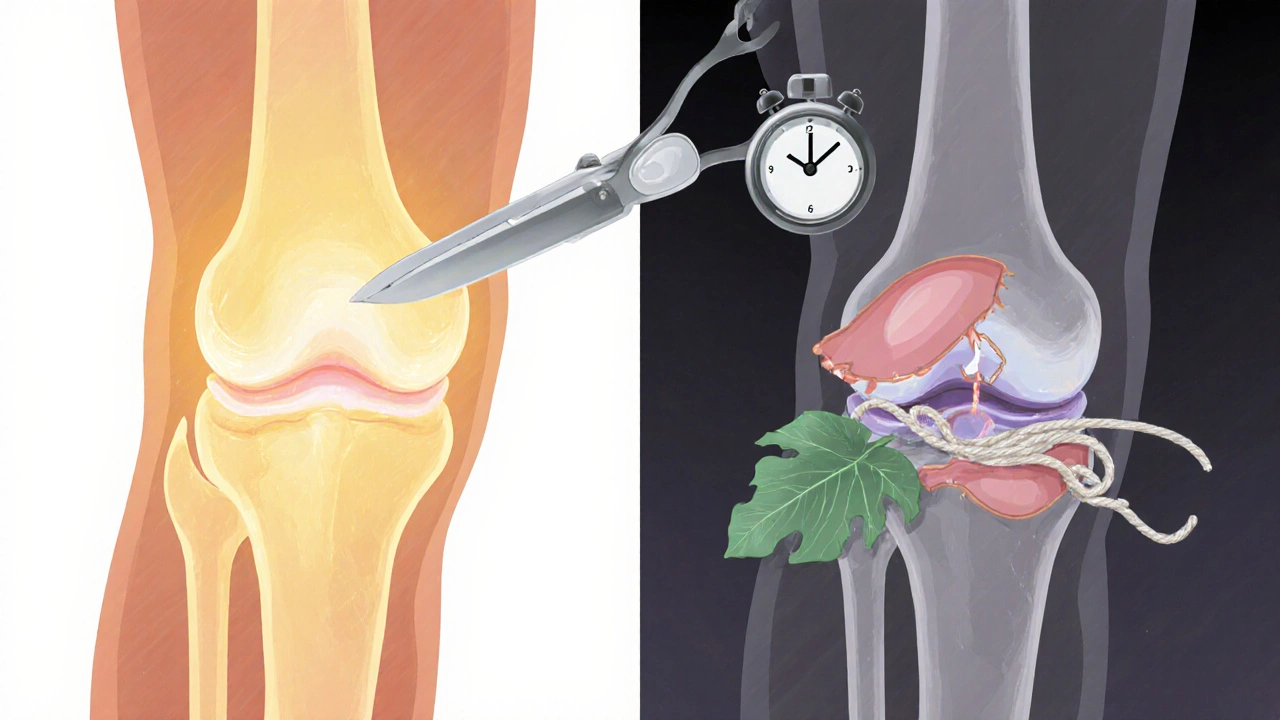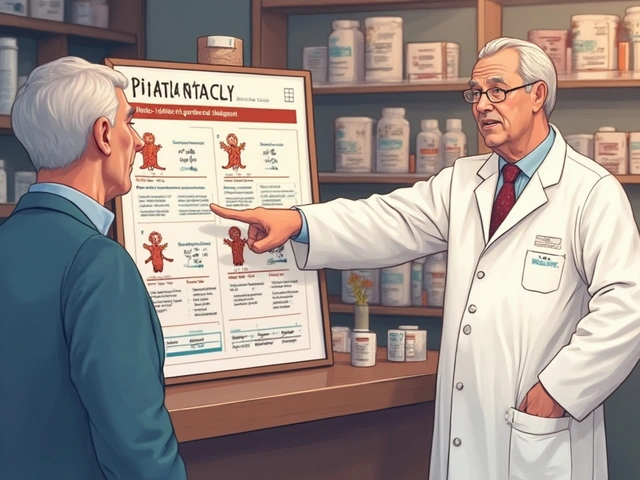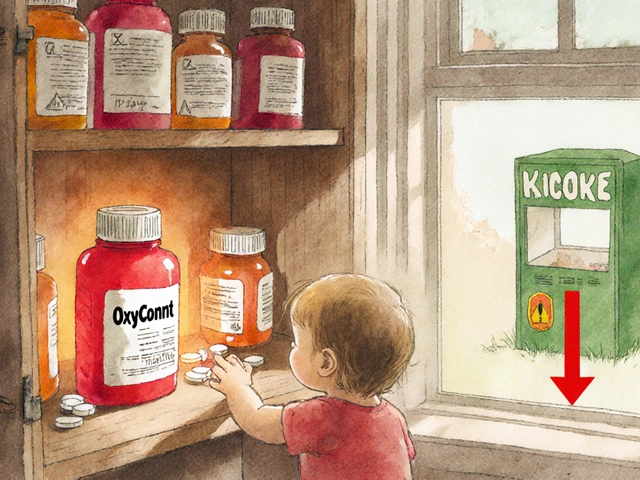23
Meniscus and ACL Injuries: Understanding Knee Pain and When Surgery Is Necessary

When your knee gives out during a soccer game, or you feel a sharp pop while landing from a jump, it’s not just a bad feeling-it’s a signal that something serious might be wrong. Two of the most common and debilitating knee injuries are ACL tears and meniscus tears. They often happen together, but they’re not the same. One is a ligament snap, the other is cartilage damage. And the way you treat them? That can change everything-your recovery time, your risk of arthritis, even whether you’ll ever play sports again.
What Exactly Is an ACL Tear?
The anterior cruciate ligament, or ACL, is the main stabilizer of your knee. It stops your shinbone from sliding too far forward under your thighbone and keeps your knee from twisting too hard. It’s about 32mm long and incredibly strong-able to handle over 2,000 newtons of force before snapping. But during sports, especially when you stop suddenly, change direction, or land awkwardly, that force can overwhelm it. About 70% of ACL tears happen without contact-think of a basketball player landing after a rebound or a skier catching an edge. You’ll often hear a pop, your knee will swell within hours, and you’ll feel unstable, like your leg might buckle under you. That’s the pivot shift test in action: your tibia shifts forward when your knee bends, and your body knows something’s broken. Not every ACL tear needs surgery. But if you’re under 40, active, and want to keep playing sports that involve cutting, jumping, or pivoting, surgery is almost always recommended. Studies show that without reconstruction, your knee is far more likely to give way again, damaging the meniscus and cartilage over time. And once that starts, osteoarthritis isn’t far behind.What About a Meniscus Tear?
While the ACL is a rope-like ligament, the meniscus is a C-shaped cushion made of tough cartilage. You’ve got two: one on the inside (medial), one on the outside (lateral). They’re like shock absorbers, spreading your body weight evenly across the knee joint. Without them, your bones grind against each other-and that’s how arthritis starts. Meniscus tears don’t always come with a pop. Sometimes it’s just pain along the joint line, swelling that shows up hours later, or that annoying feeling that your knee is catching or locking. You can’t straighten it all the way. That’s a classic sign of a bucket-handle tear, where a piece of cartilage flips into the middle of the joint. Here’s the key difference: ACL tears almost always need surgery for active people. But meniscus tears often don’t. About 60-70% of meniscus tears can be managed without surgery-rest, physical therapy, and time. Surgery is only recommended if you have mechanical symptoms like locking, or if the tear is in the outer edge where blood flow exists. Why? Because removing even a small piece of meniscus increases your risk of osteoarthritis by 14% for every 10% of tissue lost. That’s not a small trade-off. Surgeons now try to repair, not remove. But repair only works if the tear is in the red zone-the outer third of the meniscus where blood vessels bring healing nutrients. If it’s in the white zone, deep inside, repair fails in over half the cases.When Is Surgery the Right Choice?
For ACL: If you’re under 40 and active, surgery is the standard. The data is clear. A 2023 MOON study found that athletes who avoided surgery had a 75% chance of developing a second meniscus tear within five years. ACL reconstruction using your own tissue (autograft)-either hamstring or patellar tendon-has a 90% success rate in restoring stability. Allografts (donor tissue) heal faster initially but fail more often in young athletes. In fact, under-25s using allografts have a 22% re-tear rate versus just 7.7% with autografts. For meniscus: Surgery is only needed if conservative care fails. If your knee locks, catches, or you can’t fully straighten it, you likely need an arthroscopy. But if it’s just pain and swelling, try 6-8 weeks of PT first. Many patients improve without ever stepping into an operating room. The biggest mistake? Delaying treatment. If you wait more than three months to address a meniscus tear, the tissue starts to fray and degenerate. That drops your chance of repair from 80% to under 40%. You’ll likely end up with a partial meniscectomy-removing the damaged part-instead of a repair. And that’s a one-way street. Once it’s gone, it’s gone.
Recovery: ACL vs. Meniscus
ACL recovery is a marathon. Even with the best surgery, you’re looking at 9 months before you can safely return to sports. That’s not a suggestion-it’s backed by data. Returning before 9 months increases re-injury risk by 5 times. The rehab is strict: weeks 0-2 focus on getting full knee extension and 90 degrees of flexion. Weeks 3-6 build strength and balance. By month 4, you start light jogging. Only at month 7-9 do you begin cutting and pivoting drills. And even then, you need to hit 90% strength symmetry on a single-leg hop test before you’re cleared. Meniscus recovery depends on what’s done. If you have a meniscectomy-removal of the torn part-you’re walking the next day. Most people return to light work in 2-4 weeks. Full recovery takes 6-8 weeks. But if you had a repair? That’s a whole different story. You’ll be in a brace for 6 weeks, limited to 90 degrees of bend, and only allowed to put 30% of your body weight on the leg. No squatting. No twisting. No running for 4 months. Return to sport takes 5-6 months. And even then, 15-25% of repairs fail, meaning you’ll need another surgery to remove the damaged tissue anyway.Costs, Risks, and Real-Life Outcomes
ACL reconstruction costs between $15,000 and $25,000. Meniscectomy runs $6,000-$12,000. Meniscus repair? $9,000-$18,000. Why the big difference? Repair is more complex, takes longer, and requires more post-op care. Insurance covers both, but out-of-pocket costs vary. Risks? For ACL: stiffness (arthrofibrosis), graft failure, or re-tear. About 5% of patients develop this if they return too early. For meniscus: persistent pain, swelling, or early arthritis. One patient on Reddit shared that after a meniscus repair, they lost 20 degrees of full knee extension permanently. Another, after ACL surgery, had 15% less quad muscle mass at 12 months-even after months of rehab. Patient satisfaction tells a story. For ACL surgery, 82% of patients report good to excellent outcomes at 2 years. But 20-30% develop osteoarthritis within a decade. For meniscectomy, 85% are happy in the short term-but that satisfaction drops as arthritis creeps in. Meniscus repair has lower satisfaction (67%) because recovery is longer and outcomes less predictable. But those who heal well? They avoid arthritis for decades.What’s Changing in 2025?
The tide is turning. Surgeons are repairing more meniscus tears than ever before. In Europe, 40% of meniscus injuries get repaired. In the U.S., it’s still only 25%. But that’s changing. New data shows that preserving the meniscus reduces arthritis risk by up to 50% over 15 years. That’s why guidelines now push repair over removal-even for tears in the red-white zone, using biologics like platelet-rich plasma (PRP) to boost healing. ACL rehab is also evolving. Accelerated protocols that let athletes return at 8 months? They’re risky. A 2023 update from the MOON group found a 22% re-injury rate with 8-month returns versus just 4.5% at 9 months. The gold standard remains 9 months. And prehab-strengthening your quads before surgery-is now standard. Patients who do 6 weeks of prehab reduce post-op weakness by over half. New tech is emerging too: meniscus allografts (donor cartilage transplants) are helping younger patients with massive damage, and tissue engineering trials are underway. But for now, the best tool is still your own body-proper rehab, patience, and avoiding the temptation to rush back.What Should You Do If You Injure Your Knee?
If you hear a pop and your knee swells fast-get an MRI. Don’t wait. If you feel locking or catching-see a sports medicine specialist within 2 weeks. Delaying meniscus treatment by 3 months cuts your chance of repair in half. If you’re active and under 40 with an ACL tear: talk to your surgeon about autograft reconstruction. Don’t choose allograft unless you’re over 40 or have low activity goals. If you have a meniscus tear: try physical therapy first. If pain and swelling go away, you’re probably fine. If you still lock or can’t straighten your knee, surgery may be needed-but only if the tear is in the right spot. And remember: your knee isn’t just a joint. It’s your mobility. Your independence. Your ability to move without pain. Treating it right isn’t about surgery-it’s about preserving function for the long haul.Can you walk with a torn ACL or meniscus?
Yes, you can often walk with both injuries, but it’s not safe. With an ACL tear, your knee may feel unstable, especially when turning or going down stairs. With a meniscus tear, walking might be painful, and you might feel locking or catching. Walking on a torn ACL increases the risk of further damage to the cartilage and meniscus. Even if you can walk, you should avoid sports and twisting motions until evaluated.
Do all meniscus tears need surgery?
No. About 60-70% of meniscus tears can be treated without surgery, especially if they’re small, not causing locking, and located in the outer edge where blood flow helps healing. Physical therapy, rest, and anti-inflammatory care often work well. Surgery is only recommended if you have mechanical symptoms like catching, locking, or inability to fully straighten your knee.
How long does ACL recovery take?
Full recovery from ACL reconstruction typically takes 9 months before returning to sports. You’ll need to regain full range of motion, strength, and balance. Rushing back before 9 months increases the risk of re-tearing the graft by 5 times. Most patients can walk without crutches in 2-4 weeks, drive in 4-6 weeks, and return to light exercise by 3-4 months-but sports require the full timeline.
Is meniscus repair better than removal?
Yes, if it’s possible. Repairing the meniscus preserves the shock-absorbing tissue and cuts your risk of developing osteoarthritis later in life by up to 50%. But repair only works if the tear is in the outer, blood-rich zone and if you’re willing to follow a strict 5-6 month recovery. Removal (meniscectomy) gives faster results but increases arthritis risk by 14% for every 10% of meniscus removed.
Can you prevent ACL and meniscus injuries?
Yes, significantly. Programs like FIFA 11+ have been shown to reduce ACL injuries by up to 50% in athletes. These focus on neuromuscular training-balance, landing mechanics, and strengthening the hamstrings and glutes. For meniscus injuries, avoiding deep squatting with twisting motions and maintaining strong quadriceps helps. Prevention isn’t just about technique-it’s about consistency.








